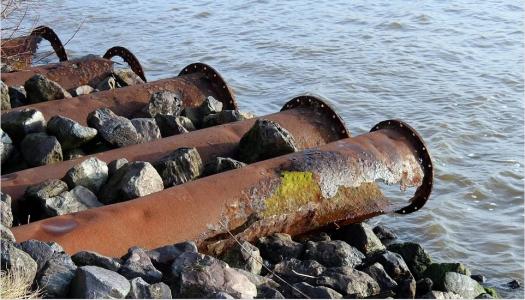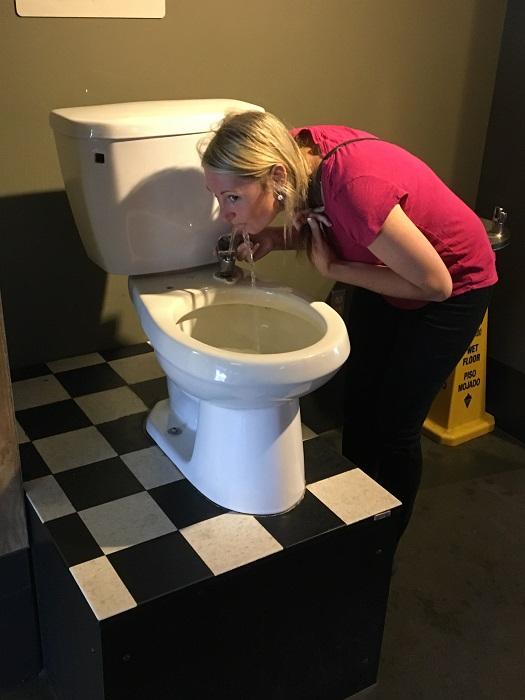Yuck! Gross! and Ewwww!
Featured
Share online

Overcoming our disgust response to realize the water saving potential of water reuse
In San Francisco, you can visit the Exploratorium, a fun, interactive science centre. If you’re thirsty, there is a water fountain toilet. All you need to do is reach over the bowl and take a drink. As a self-proclaimed water-nerd and water industry professional, I had to drink from the toilet. My husband, on the other hand, vehemently refused. I suspect his reaction is the more common reaction. Toilets are dirty and water that touches them is gross. This mentality – that toilet water is disgusting – is problematic for communities that want to preserve drinking water supplies by reusing treated wastewater.

Global climate change, population growth and overuse increasingly stress freshwater supplies. Treating and reusing wastewater for activities that we normally, and unnecessarily, use drinking water for, can significantly reduce water supply demands. Communities use high-quality treated drinking water to flush toilets, clean sewer pipes, irrigate and more. Treated wastewater is a suitable alternative for these practices and, under certain conditions, even drinking.
Water reuse technologies have existed for years and are effective, affordable, and safe. For example, since 1968 Windhoek, Namibia – motivated by droughts, population growth and an overburdened water supply – has consumed treated wastewater with no associated negative health impacts. Yet despite decades of research showing the safety and potential of wastewater reuse, the public often vociferously rejects treated wastewater’s use in their community. This rejection is attributed to people’s ‘YUCK!’ disgust response at the idea of using water that once mixed with feces and urine.
Wastewater is a resource, not a problem.
Industry professionals have largely attempted to ease the public’s disgust through reassuring facts and education about treated wastewater’s safety and the project rationale. While important, this type of outreach is not enough to stimulate public willingness to use treated wastewater in their community. People are not solely rational actors and information alone does not create lasting behaviour change. Education’s limitations are reflected in the case of Toowoomba, Australia. Residents voted down a water reuse project via public referendum despite exposure to a ten-week information campaign and unanimous support from local and state governments. The outcome was driven by fears and perceptions about the health, safety and damage to the city’s reputation and local food industry.
What can we do to make wastewater reuse more acceptable?
So how should we engage with communities to move past the automatic disgust response, generate productive conversations about wastewater reuse, and increase project success rates? A strategic communications approach that accounts for powerful, but ‘irrational’ emotional responses is urgently needed for water reuse to become a viable option to protect freshwater supplies. As water scarcity becomes more commonplace water reuse practices will become increasingly critical to support communities’ water security.
As a Royal Roads’ Doctor of Social Science student, I argue that emotional influences cannot be ignored if we hope to safeguard the future of our water supplies. To test this idea, I’ll draw from cognitive affective science, psychology, communications and environmental behaviour change literatures to explore how communication measures can be specifically designed to account for emotions’ powerful influence on decision making. Using a mixed method study, I will design, develop and test communication tools and messages for their capacity to overcome the publics' ‘irrational’ disgust response and generate more support for water reuse project proposals. My findings will inform a novel, strategic communication approach that I hope will enhance municipal public engagement for Canadian and international water reuse projects.